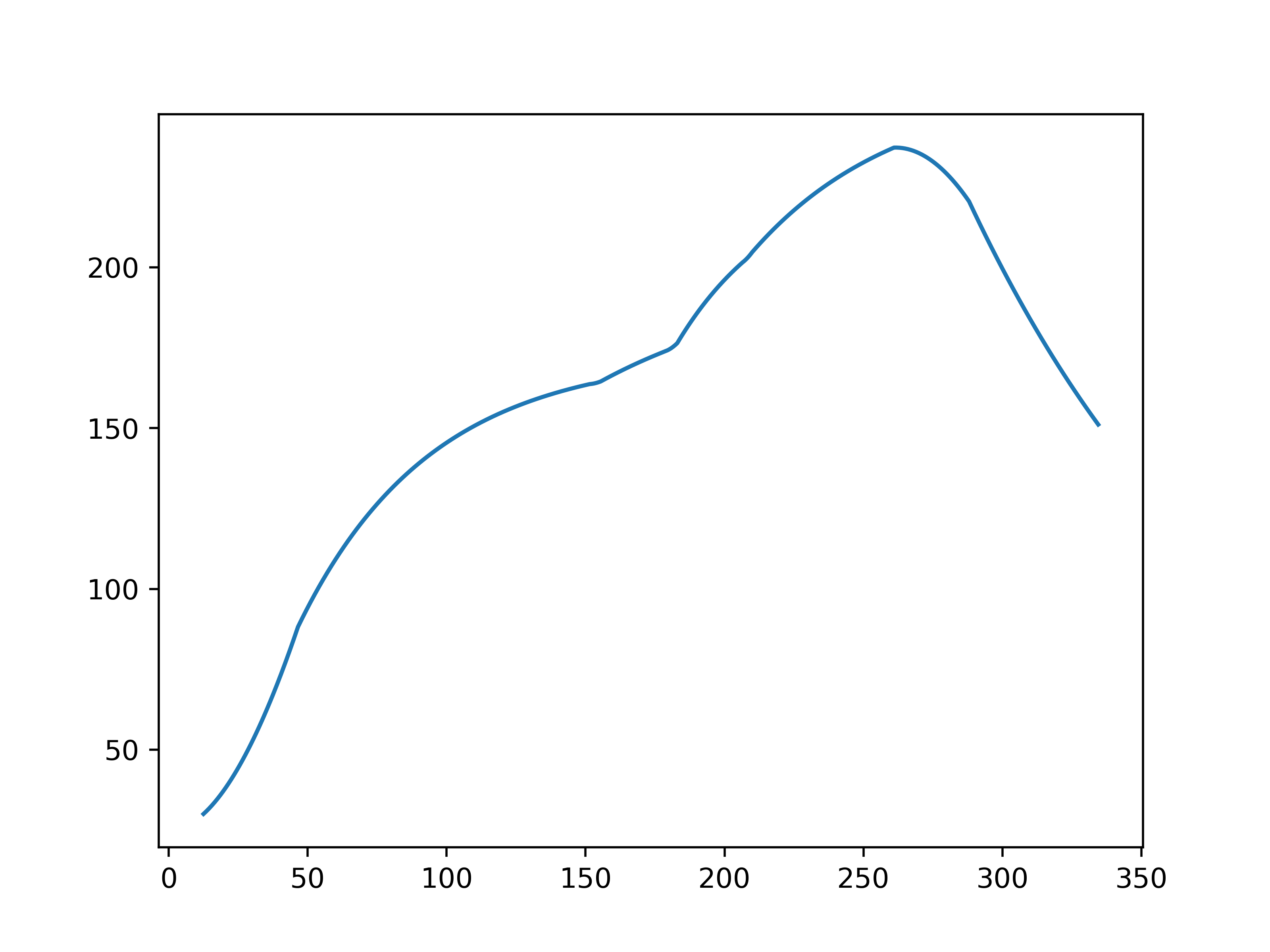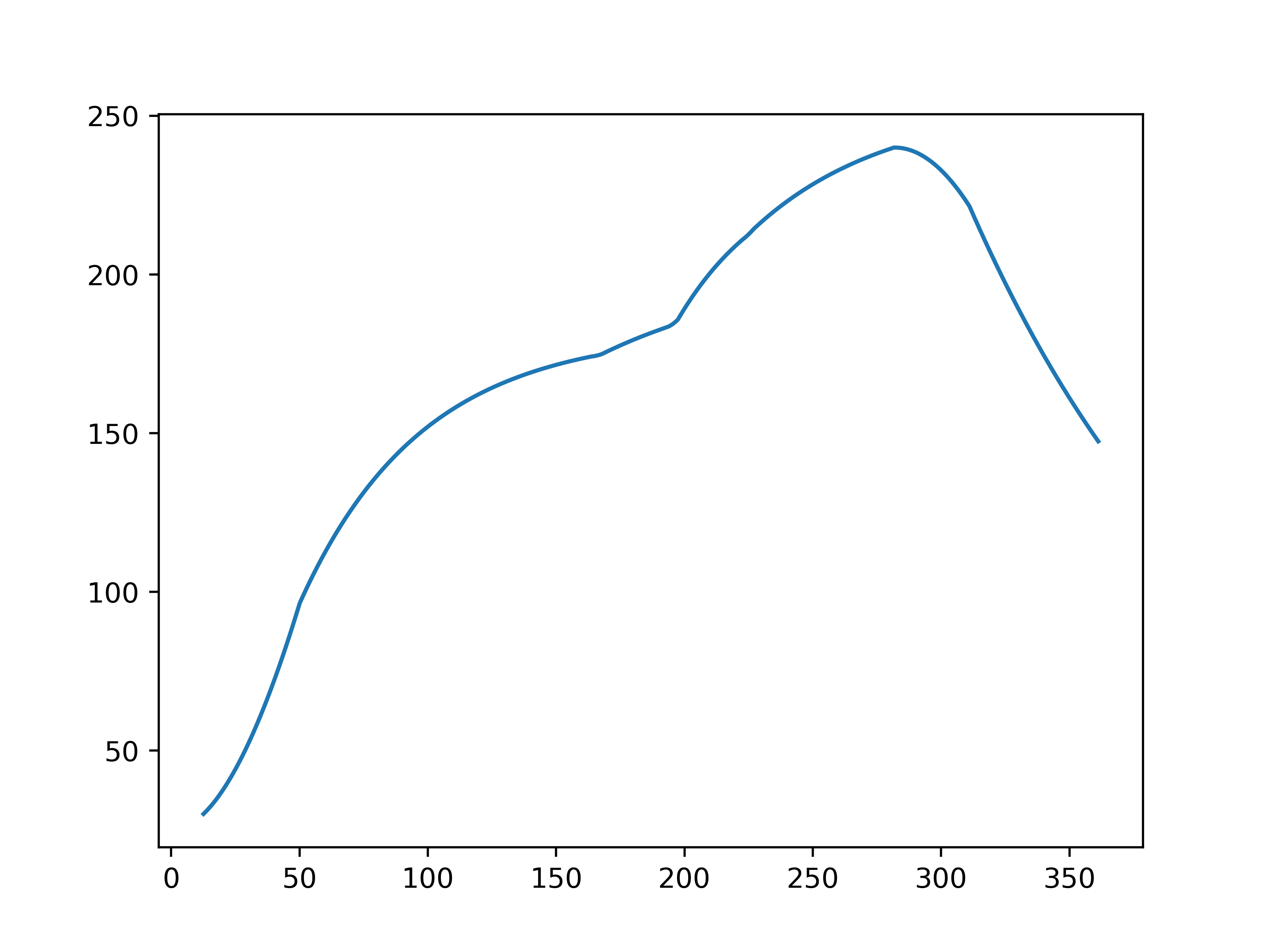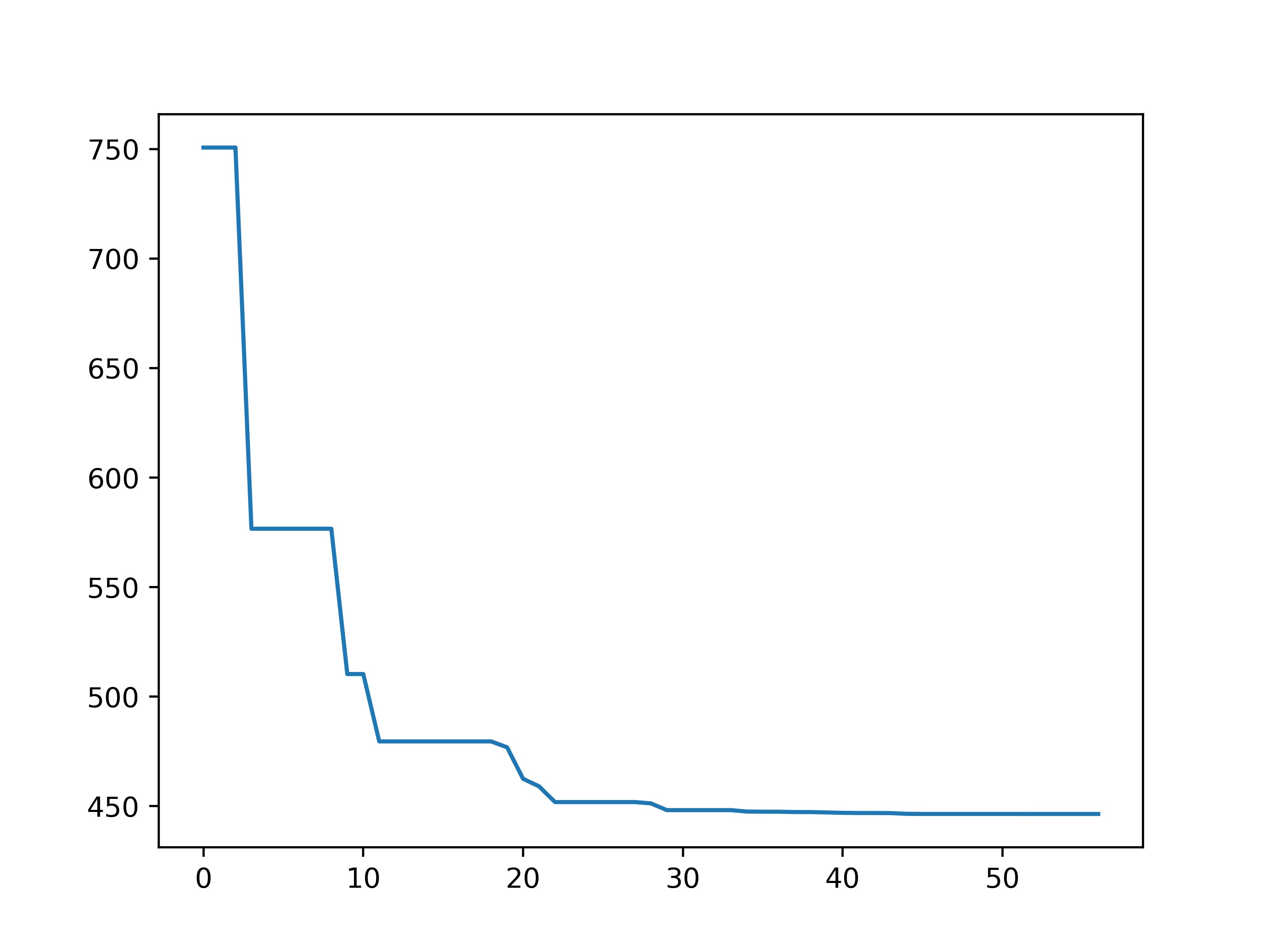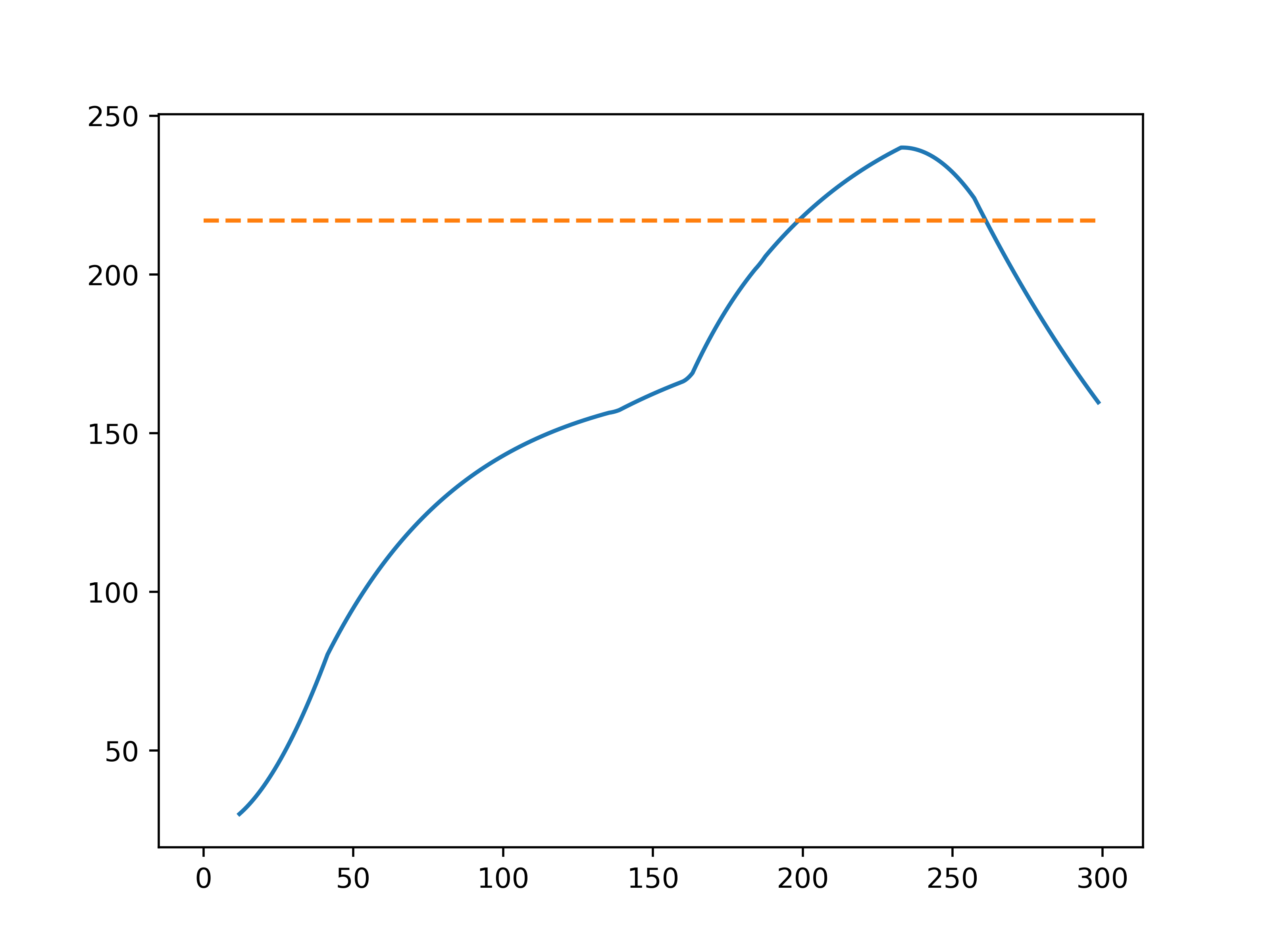1
2
3
4
5
6
7
8
9
10
11
12
13
14
15
16
17
18
19
20
21
22
23
24
25
26
27
28
29
30
31
32
33
34
35
36
37
38
39
40
41
42
43
44
45
46
47
48
49
50
51
52
53
54
55
56
57
58
59
60
61
62
63
64
65
66
67
68
69
70
71
72
73
74
75
76
| import numpy as np
import pylab as plt
import pandas as pd
from scipy.optimize import curve_fit
exc = pd.read_excel("input.xlsx", usecols=range(0, 2))
data = exc.values
pos = np.array([[0, 0], [25, 55.5], [60.5, 91], [96, 126.5], [131.5, 162], [167, 197.5], [202.5, 233], [238, 268.5], [273.5, 304], [309, 339.5], [344.5, 375], [380, 410.5], [435.5, 460.5]]
)
ranx = np.array([[0, pos[2][0]], [pos[2][0], pos[5][1]], [pos[5][1], pos[6][0]],
[pos[6][0], pos[6][1]], [pos[6][1], pos[7][0]], [
pos[7][0], pos[7][1]],
[pos[7][1], pos[8][0]], [pos[8][0], pos[9][1]], [
pos[9][1], pos[10][1]],
[pos[10][1], pos[12][0]]])
def getab(i, tem):
x1 = pos[i][1]
x2 = pos[i+1][0]
t1 = tem[i]
t2 = tem[i+1]
a = (t2-t1)/(x2-x1)
b = t1-a*x1
return (a, b)
def getfx(x, tem):
for i in range(0, 12):
if (pos[i][0] <= x and x <= pos[i][1]):
return (0, tem[i])
elif (pos[i][1] <= x and x <= pos[i+1][0]):
return getab(i, tem=tem)
return (-1, -1)
def f(tt, lmd):
def gettem(t):
a, b = getfx(t[0]*v, tem=tem)
c = (T0-a*v*t0+a*v/lmd-b)*np.exp(lmd*t0)
return a*v*t-a*v/lmd+b+c*np.exp(-lmd*t)
return gettem(tt)
if __name__ == '__main__':
tem = np.array([25, 173, 173, 173, 173, 173,
198, 230, 257, 257, 25, 25, 25])
v = 70/60
tT = data
t = tT.T[0]
T = tT.T[1]
lmds = []
TT = []
x = t*v
lj, j = 0, 0
for ranxi in ranx:
while (j < len(x) and x[j] <= ranxi[1]):
j += 1
t0 = t[lj]
T0 = T[lj]
popt, pcov = curve_fit(f, t[lj:j], T[lj:j])
lmds.extend(popt)
TT.extend(f(t[lj:j], lmd=popt))
lj = j
if (j >= len(x)):
break
plt.scatter(t, T, s=1)
plt.plot(t, TT, color='r')
plt.savefig('getlmd.png', dpi=500)
plt.show()
print(lmds)
|







